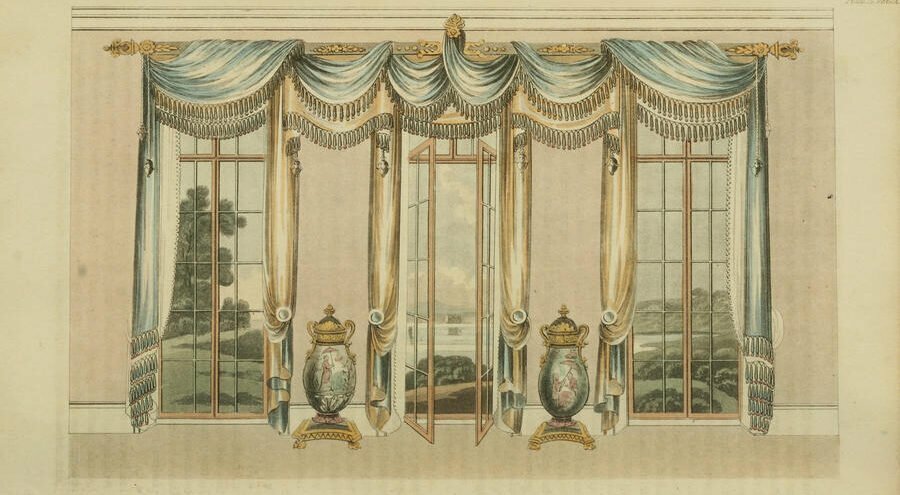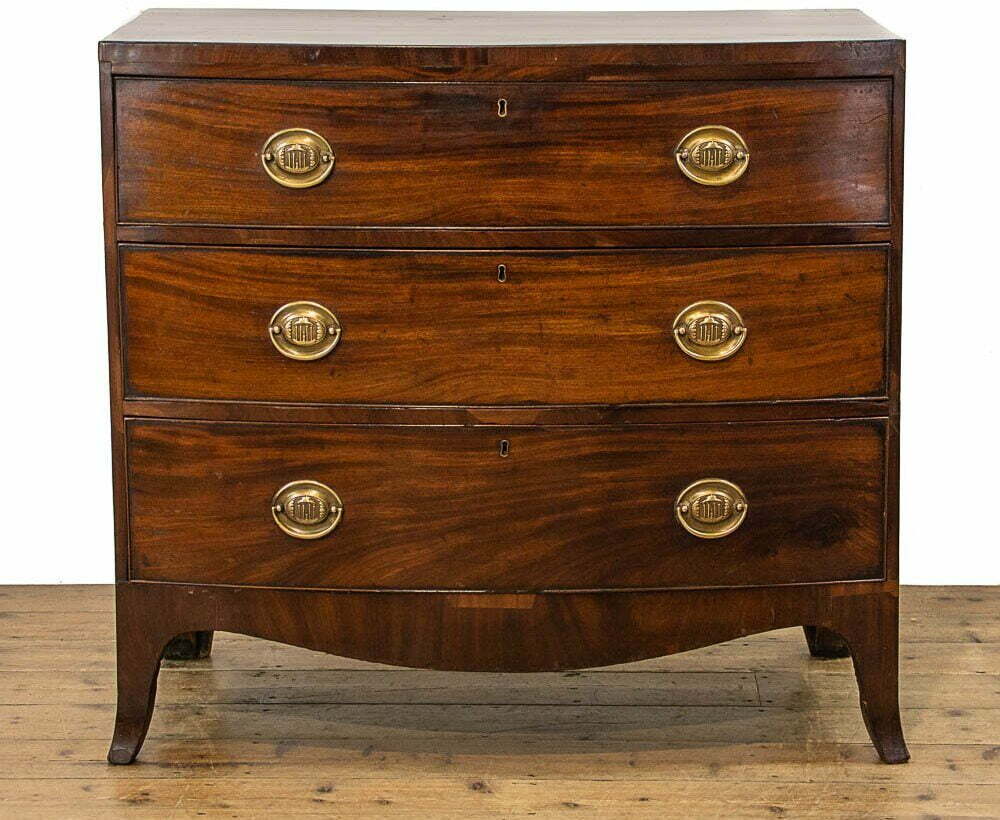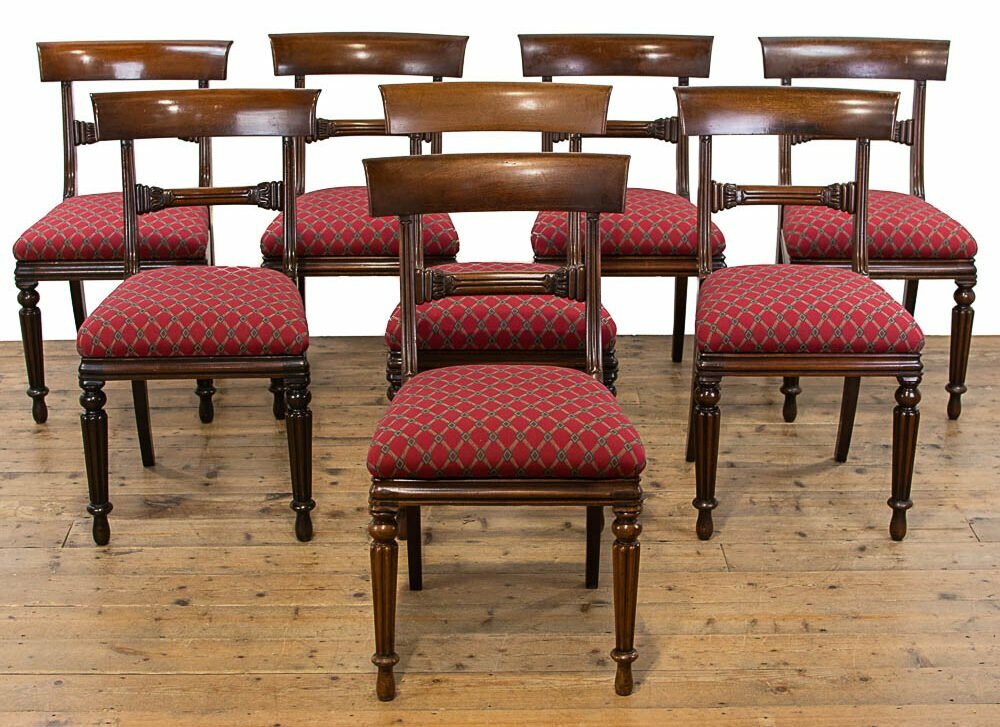In the Spotlight: Regency Furniture
The Regency Period
The Regency period in Britain, spanning the early 19th century, is named after the Prince Regent, who served as the Prince of Wales from 1811 to 1820. It was a time of significant cultural and artistic development, including the emergence of a distinct style of furniture and home decor known as Regency furniture. This period, which encompassed the reign of King George IV until his death in 1830, witnessed the dominance of English country homes and the influence of the French Empire style.
The Influence of the Prince Regent on Regency Furniture:
The Prince Regent played a pivotal role in shaping the tastes and fashions of the Regency era. Known for his eclectic taste, he favoured neoclassical designs and various stylistic revivals, such as the Indian and Gothic revival styles. Wealthy patrons eagerly embraced the Prince Regent’s preferences, and his influence extended not only to home decor, furniture, and architecture but also to social innovations that transformed the lives of the English nobility. For example, dining at a later hour and the adoption of the Russian-style service à la russe during meals were reflective of the prince’s patronage of neoclassical styles. Despite his indulgent lifestyle, the prince’s lavish commissions remain prominent components of the present-day Royal Collection, serving as a testament to the opulence and expense of Regency design.
Evolution of Regency Furniture:
Regency furniture evolved from the styles of preceding decades and incorporated the prevailing trends of the time. Initially popularized by craftsmen in London, the new styles gradually spread to rural regions. Regency furniture, particularly chairs crafted during this period, holds immense value as sought-after antiques today.
One of the significant influences on Regency furniture was neoclassicism. While the French embraced opulent antiquity, the English approach retained a classical simplicity of form. Furniture pieces incorporated exact replicas or reinterpretations of ancient Egyptian, Greek, and Roman motifs. Symbolic figures such as sphinxes, ancient gods, griffins, and lions adorned the furniture, showcasing the grandeur and sophistication of the Regency style. Mahogany and rosewood, renowned for their rich and dark appearance, were the preferred woods used in crafting Regency furniture. Rather than emphasizing marquetry and carving techniques, greater importance was placed on the wood’s surface, patina, and elegant silhouettes. Brass metalwork featuring intricate motifs like shells and acanthus leaves provided a striking contrast to the wooden structures. Brass inlays, cut from brass sheets, were frequently incorporated as narrow banding and stringing lines into rosewood and mahogany furniture. This decorative technique added a touch of elegance and sophistication to Regency pieces. The intricate brass inlays often featured geometric patterns, floral motifs, or classical designs such as acanthus leaves and Greek key patterns, further accentuating the luxurious aesthetic of the furniture.
Influential Figures to Regency Furniture:
Thomas Hope, a Scottish-Dutch banker and art collector, played a pivotal role in the development of Regency furniture. His London residence on Duchess Street, adorned with an extensive collection of ancient Greek vases and various design elements, became a major source of inspiration for the Regency style. Beyond his own home, Hope’s vision extended to the broader domain of interior decoration, and his publication “Household Furniture and Interior Decoration” introduced the term “interior decoration” to the English language. The eclectic mix of styles prevalent during the Regency period is exemplified in his country home, the Deepdene estate in Surrey, which drew influences from Greece, Egypt, France, and Italy.
Another influential figure during the Regency period was John Nash, a renowned architect. Nash’s innovative and grand designs left a lasting impact on both architecture and furniture design of the era. While he is primarily recognized for his iconic buildings such as the Brighton Pavilion and Carlton House, Nash’s influence extended to the realm of furniture design as well. His furniture designs were characterized by elegant silhouettes, exquisite woodwork, and intricate brass accents. Nash seamlessly blended neoclassical elements with exotic influences, contributing to the unique and luxurious aesthetic of Regency furniture.
Enduring Appeal and Legacy of Regency Furniture:
Today, Regency furniture continues to be highly sought after by collectors and enthusiasts of antique furniture. Its timeless elegance, fine craftsmanship, and historical significance captivate those who appreciate the beauty and artistry of this period. Whether displayed in stately homes, museums, or private collections, Regency furniture stands as a testament to the enduring legacy of the Prince Regent’s influence and the creative spirit of the Regency era.
In conclusion, the Regency period in Britain brought forth a distinct style of furniture and home decor known as Regency furniture. Shaped by the tastes and fashions of the Prince Regent, the fusion of neoclassical and exotic influences, and the creative contributions of figures like Thomas Hope and John Nash, Regency furniture exudes elegance, grandeur, and refined aesthetics. Its enduring beauty, historical significance, and meticulous craftsmanship continue to make it a treasured and admired aspect of British design history.
Here at Penderyn Antiques we offer a wide range of furniture, to shop our Regency Antiques click here.



